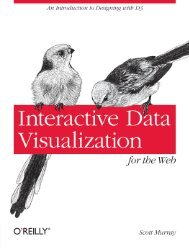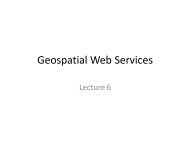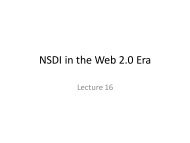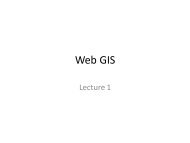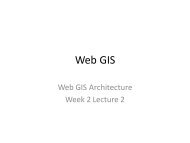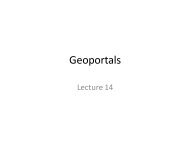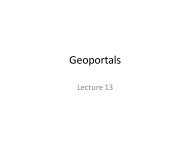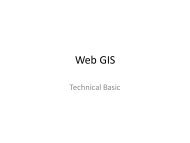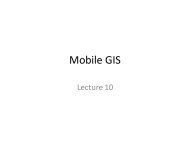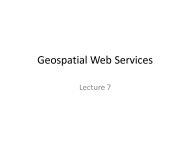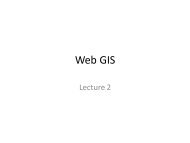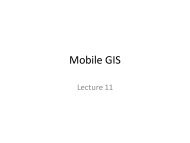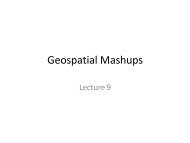geodesign-in-practice
- No tags were found...
You also want an ePaper? Increase the reach of your titles
YUMPU automatically turns print PDFs into web optimized ePapers that Google loves.
Turn<strong>in</strong>g Red Fields <strong>in</strong>to Green Fields <strong>in</strong> Los Angeles<br />
It's All Connected<br />
Geodesign is about holistic design and communication. It is<br />
about easily l<strong>in</strong>k<strong>in</strong>g seem<strong>in</strong>gly disparate data <strong>in</strong>to a cohesive<br />
graphic language that can tell a story far more powerful than<br />
its <strong>in</strong>dividual parts. Nowhere is this better illustrated than <strong>in</strong> the<br />
story of how someth<strong>in</strong>g as humble and democratic as a park<br />
could help reverse the country's economic malaise.<br />
Michael Messner, a Wall Street fund manager and cofounder of<br />
the Speedwell Foundation, proposed Red Fields to Green Fields<br />
(R2G), a plan for turn<strong>in</strong>g distressed properties (red fields) <strong>in</strong>to<br />
parks (green fields). His argument is simple—remove the glut of<br />
overbuilt and foreclosed properties and redeploy that capital out<br />
of underperform<strong>in</strong>g real estate and <strong>in</strong>to green space. It would<br />
stabilize property values, strengthen banks, and create jobs. As<br />
Messner puts it, "Tear<strong>in</strong>g down can create wealth. Land without<br />
build<strong>in</strong>gs should be considered an asset by our f<strong>in</strong>ancial system."<br />
He goes on to po<strong>in</strong>t out that the benefits are far more than<br />
f<strong>in</strong>ancial.<br />
In essence, parks benefit the "triple bottom l<strong>in</strong>e" by improv<strong>in</strong>g<br />
economic, social, and environmental health of communities. From<br />
New York City's Central Park to the City of Boulder's greenbelt,<br />
history has shown that parks and open space tend to <strong>in</strong>crease<br />
ArcMap, 2000 Census<br />
data, and land use<br />
data from both Esri<br />
and the Southern<br />
California Association<br />
of Governments<br />
(SCAG) were used to<br />
identify three areas<br />
that were both parkpoor<br />
and economically<br />
disadvantaged (outl<strong>in</strong>ed<br />
<strong>in</strong> black).<br />
(From Dakotah Bertsch,<br />
Michael Boucher, Eran<br />
James, and Abby Jones.<br />
Red Fields to Green<br />
Fields Los Angeles,<br />
Pomona: California State<br />
Polytechnic University 606<br />
Design Studio, used with<br />
permission.)<br />
nearby property values; attract tourists and residents who<br />
contribute to local commerce; <strong>in</strong>crease public health by provid<strong>in</strong>g<br />
opportunities for physical recreation and mental relaxation; and<br />
perform vital environmental services, such as treat<strong>in</strong>g storm water,<br />
reduc<strong>in</strong>g heat island effects, and improv<strong>in</strong>g air quality.<br />
Geodesign <strong>in</strong> Practice: Design<strong>in</strong>g a Better World<br />
J10221<br />
Turn<strong>in</strong>g Red Fields <strong>in</strong>to Green Fields <strong>in</strong> Los Angeles<br />
48




